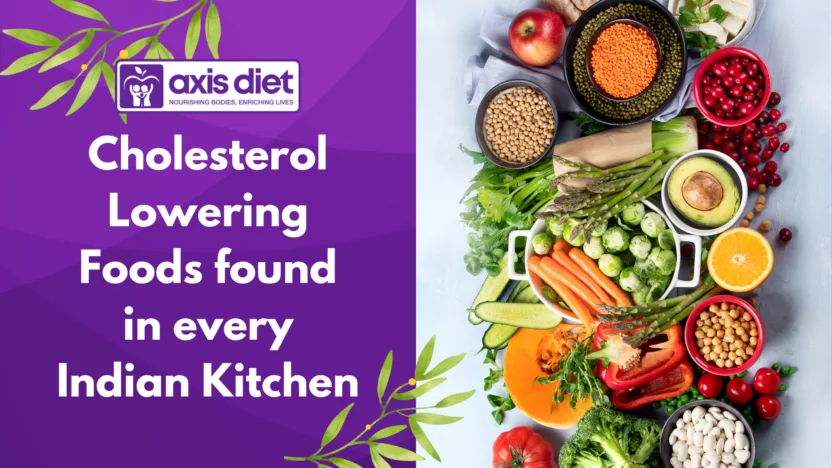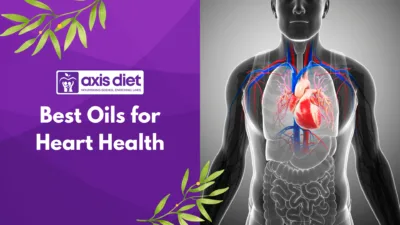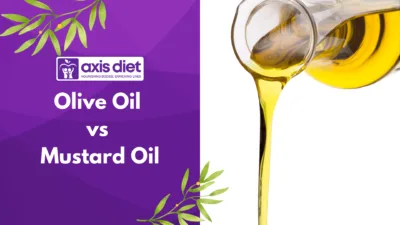Cholesterol control is essential for heart health, and Indian kitchens are rich in nutritious foods that can help lower cholesterol levels. By incorporating local grains, vegetables, legumes, and spices into daily meals, you can make significant strides toward a healthier heart. This guide explores the best cholesterol-lowering Indian foods and their benefits.
Understanding Cholesterol
Understanding cholesterol is essential for maintaining heart health. Cholesterol is a waxy, fat-like substance found in every cell of the body. It plays a vital role in producing hormones, vitamin D, and substances that help digest foods. However, not all cholesterol is the same. There are two primary types: low-density lipoprotein (LDL) and high-density lipoprotein (HDL).
LDL cholesterol is often referred to as “bad” cholesterol. High levels of LDL cholesterol can lead to plaque buildup in the arteries, resulting in a condition called atherosclerosis. This narrowing of the arteries restricts blood flow and increases the risk of heart attacks and strokes. On the other hand, HDL cholesterol is known as “good” cholesterol. It helps remove other forms of cholesterol from the bloodstream, thus providing a protective effect against heart disease.
Maintaining a balance between LDL and HDL cholesterol is crucial. High levels of LDL and low levels of HDL can significantly increase the risk of various cardiovascular diseases. Heart attacks, strokes, and heart failure can stem from untreated high cholesterol levels. It’s vital to proactively manage cholesterol through regular health check-ups, lifestyle changes, and a balanced diet.
Diet plays a significant role in cholesterol management. Foods high in saturated fats can increase LDL cholesterol. These include red meats, full-fat dairy products, and processed foods. Conversely, certain foods can help lower cholesterol levels. Foods rich in soluble fiber, like oats, barley, beans, and lentils, can reduce LDL levels. Omega-3 fatty acids found in fish, flaxseeds, and walnuts also have heart-protective benefits.
Incorporating fruits and vegetables into the diet is crucial. They are not only low in calories but also high in essential nutrients. Foods like apples, strawberries, and citrus fruits combat cholesterol effectively. Furthermore, whole grains like brown rice, whole wheat bread, and quinoa are excellent choices for heart health.
Managing cholesterol levels helps prevent significant health issues. A balanced diet rich in heart-healthy foods promotes overall well-being. For more ways to incorporate healthy meals into your routine, explore low-calorie Indian meals that can support your cholesterol management efforts.
The Role of Diet in Cholesterol Management
Diet plays a pivotal role in managing cholesterol levels. What we consume influences how our bodies produce and process cholesterol. A well-balanced diet can significantly impact heart health and overall well-being. It is essential to understand how specific foods can lower cholesterol and promote cardiovascular health.
Consuming soluble fiber is one effective way to reduce cholesterol levels. Soluble fiber helps to bind cholesterol in the digestive system, preventing its absorption into the bloodstream. Foods rich in soluble fiber include lentils, beans, and fruits such as apples and pears. These foods are commonly found in Indian kitchens and can easily be incorporated into daily meals.
Nuts, particularly almonds and walnuts, are another excellent choice. These nuts contain healthy fats that help to raise levels of HDL (good cholesterol) while lowering LDL (bad cholesterol). A small handful of nuts as a snack can be a heart-healthy choice. Additionally, seeds like flaxseeds and chia seeds are rich in omega-3 fatty acids, which also contribute to lowering cholesterol levels.
The use of healthy cooking oils can make a significant difference as well. Oils such as mustard oil or olive oil are known to be heart-healthy. These oils contain monounsaturated fats that can improve cholesterol levels. Traditional Indian cooking often incorporates these healthier fats, promoting overall heart health.
Incorporating fruits and vegetables into every meal is vital. Dark leafy greens, like spinach, are rich in vitamins and minerals that support cardiovascular health. Berries, like strawberries and blueberries, are also powerful due to their antioxidants. They help reduce inflammation and improve cholesterol levels effectively.
Avoiding trans fats found in processed foods is crucial in managing cholesterol. Instead, focusing on whole, unprocessed foods ensures that your diet supports heart health. In addition to cholesterol-lowering foods, a balanced diet should include sufficient vitamins, minerals, and nutrients.
Hydration is another important aspect of dietary management. Adequate water intake supports overall metabolism and aids in digestion, further contributing to a healthy heart.
Ultimately, a balanced diet comprises a variety of food groups, ensuring that essential nutrients are not overlooked. For detailed insights into how specific Indian foods promote cholesterol management, visit this guide. Making thoughtful food choices can significantly impact cholesterol management, fostering a healthier lifestyle.
Heart-Healthy Indian Staples
Cholesterol management is greatly influenced by dietary choices. Heart-healthy Indian staples form the foundation of many traditional diets, particularly whole grains. These grains are not only rich in nutrients but also play a significant role in maintaining healthy cholesterol levels. Two notable grains are oats and barley, both commonly found in Indian kitchens.
Oats are a superb source of soluble fiber, specifically beta-glucan. This type of fiber dissolves in water and forms a gel-like substance in the gut, which helps trap cholesterol and bile acids. By doing so, oats reduce the absorption of cholesterol into the bloodstream. With regular consumption, individuals may experience lower low-density lipoprotein (LDL) cholesterol levels, often referred to as “bad” cholesterol. Incorporating oats into breakfast items like upma or adding them to smoothies can easily enhance one’s fiber intake.
Another excellent grain is barley, which is also high in soluble fiber. The presence of a type of fiber called beta-glucan in barley works much like that in oats. It lowers cholesterol absorption and can support heart health effectively. Barley is often used in dishes such as khichdi or in refreshing salads. Regularly adding barley to meals can greatly enhance both heart health and fiber intake, contributing positively to the overall cholesterol management process.
This dietary fiber not only aids in cholesterol reduction but also supports a healthy digestive system. It promotes satiety, which can prevent overeating and aid in weight management—another factor contributing to healthier cholesterol levels. Incorporating these whole grains into daily meals can significantly influence vascular health.
It is important to note that the consumption of these grains should be part of a balanced diet that includes various nutrients. Engaging with a diverse set of foods ensures that the body receives the right amount of vitamins, minerals, and antioxidants, further fostering heart health. For those looking to broaden their understanding of fiber, this resource provides comprehensive insights.
Utilizing staples like oats and barley in meal preparation is quite simple. Dishes can be enriched with spices and vegetables, enhancing both flavor and nutrition. These practices align beautifully with the rich culinary traditions across India—making it easier than ever to maintain a heart-healthy diet.
Vegetables and Legumes for Lowering Cholesterol
Vegetables and legumes play an essential role in promoting heart health, particularly when it comes to lowering cholesterol. Many of these foods are staples in Indian cuisine, packed with nutrients that contribute positively to heart function. Here’s a look at some key vegetables and legumes that can help reduce cholesterol levels effectively.
Spinach, a leafy green powerhouse, is high in fiber, vitamins, and minerals. The soluble fiber in spinach binds to cholesterol in the digestive system, aiding in its removal from the body. Moreover, it contains antioxidants, which help prevent oxidative stress and inflammation, further protecting heart health.
Lentils are a versatile legume that offers numerous health benefits. Rich in soluble fiber, lentils help lower LDL cholesterol levels, often referred to as “bad” cholesterol. They are also packed with plant-based protein and essential micronutrients like folate, which supports heart health. Incorporating lentils into your diet, whether in soups, curries, or salads, can significantly boost your fiber intake.
Beans, another staple in Indian cooking, also contribute to cholesterol management. Varieties such as black beans, kidney beans, and chickpeas contain high levels of soluble fiber and protein. This combination not only helps lower cholesterol but also regulates blood sugar levels, making them an excellent option for overall heart health. Incorporating beans into stews, curries, or even as a standalone dish enriches your diet significantly.
Brussels sprouts may not be as traditional in Indian cooking, but they can be beneficial when included. They contain a type of soluble fiber known as glucosinolate, which has been shown to lower cholesterol levels. Additionally, they are rich in vitamins C and K, supporting overall cardiovascular health.
Drumsticks (Moringa pods) are another excellent addition to the Indian diet. They are rich in antioxidants and contain a unique combination of minerals and vitamins. The high fiber content not only assists in cholesterol reduction but also supports digestive health, further promoting cardiovascular wellness.
Other vegetables such as broccoli and carrots also provide beneficial antioxidants and fiber. Broccoli is recognized for its cholesterol-lowering compounds, while carrots are rich in beta-carotene and soluble fiber. Adding these vegetables to your daily meals can enhance heart health.
In conclusion, incorporating these vegetables and legumes into meals is a tasty and effective way to lower cholesterol. By prioritizing these wholesome foods, you support heart health through natural means.
For more insights on healthy eating, visit this article on gut health and Indian foods.
Powerful Spices and Herbs
Indian cuisine is replete with a variety of spices and herbs that not only enhance the flavor of dishes but also provide significant health benefits. These ingredients have been used for centuries in traditional cooking and have demonstrated positive effects on health, particularly in lowering cholesterol levels. Here are some potent spices and herbs that you can easily incorporate into your daily meals to support heart health.
Turmeric is perhaps the most noted for its health benefits. It contains an active compound called curcumin, which possesses potent anti-inflammatory and antioxidant properties. Studies have suggested that curcumin can help reduce LDL cholesterol levels, often referred to as “bad” cholesterol, and increase HDL cholesterol, known as “good” cholesterol. To include turmeric in your diet, consider adding it to curries, rice dishes, or even smoothies for a golden hue and a health boost.
Garlic is another significant player in cholesterol management. The active compound, allicin, found in garlic, has been shown to lower total cholesterol and triglycerides. Regular consumption can contribute to overall cardiovascular health by preventing plaque buildup in the arteries. You can add garlic to various Indian dishes, such as dals, sabzis, or chutneys, to not only enjoy its rich flavor but also its health benefits.
Cumin is commonly used in Indian cooking and is known for its ability to improve digestion. Beyond its digestive benefits, cumin has been found to impact cholesterol levels positively. The essential oils in cumin can aid in reducing LDL cholesterol while boosting HDL cholesterol. A simple way to integrate cumin into your daily meals is by tempering it in oil for tadka or sprinkling it over grilled vegetables.
Finally, ginger deserves mention for its cholesterol-lowering properties. It contains gingerol, which has anti-inflammatory and antioxidant effects. Ginger can be added to various beverages, curries, or stir-fried dishes. Incorporating it into your diet not only helps with cholesterol but also enhances overall flavor.
To experience the full benefits of these spices and herbs, aim to use them in a variety of dishes. They can be easily included in daily meals, such as curries, soups, smoothies, or even herbal teas. By embracing these natural ingredients, you can work towards better heart health while savoring the rich flavors of Indian cuisine. For more insights on the influence of spices on health, you can refer to this article on cooking with spices.
Healthy Cooking Methods
Choosing the right cooking methods significantly impacts the health benefits of food, especially when aiming to lower cholesterol. Techniques such as steaming, boiling, and grilling play crucial roles in optimizing the nutritional value of meals while reducing unhealthy fats. These methods are not just healthier alternatives; they also help retain the essential nutrients in foods, including vitamins and minerals.
Steaming is one of the healthiest cooking methods available. It preserves the texture, flavor, and nutritional integrity of vegetables and grains. Steamed foods experience less nutrient loss compared to those that are boiled or fried. For instance, steaming green leafy vegetables such as spinach and broccoli helps maintain their vibrant colors and rich nutrient profiles. This method allows the natural flavors to shine without the need for excess oil or fats, making it an excellent option for heart health.
Boiling is another effective cooking method. While it may seem less glamorous than steaming, it is an excellent way to prepare legumes and whole grains. Boiling legumes like lentils and chickpeas not only softens them but also helps eliminate anti-nutrients that might hinder nutrient absorption. Always reserve the water used for boiling when cooking high-nutrient foods like beans. This water can be used in soups or sauces, as it contains valuable nutrients leached from the food.
Grilling infuses food with rich flavors while minimizing the need for added fats. Vegetables grilled to perfection can serve as a tasty side or main dish. Grilling meats like chicken and fish allows excess fats to drip away, reducing the overall fat content. Using herbs and spices on grilled foods not only enhances flavor but also adds potential cholesterol-lowering benefits while keeping meals interesting and diverse.
Utilizing these healthy cooking methods should be complemented by choosing the right ingredients, as previously discussed in the context of powerful spices and herbs. Foods like spices can be integrated into meals while using these cooking techniques, amplifying health benefits. Heart-healthy choices such as beans, lentils, and various vegetables can be easily prepared using boiling, steaming, or grilling methods, paving the way for delicious and nutritious meals.
Incorporating diverse cooking methods not only enhances the flavor and texture of meals but also promotes heart health by reducing unhealthy fats. Making simple adjustments in cooking techniques can be empowering steps towards achieving better overall health.
Personalizing Your Cholesterol-Lowering Diet
Creating a personalized meal plan focused on cholesterol-lowering foods can significantly benefit heart health. It begins with understanding which foods are essential and tailoring them to individual dietary preferences and lifestyle. Incorporating a variety of foods can help maintain lower cholesterol levels while providing essential nutrients. Start by including the following in your meal plan:
- Fruits and Vegetables: Incorporating a range of colorful options, such as spinach, apples, and tomatoes, provides antioxidants and fiber.
- Whole Grains: Foods like oats, brown rice, and whole wheat bread are rich in soluble fiber, which helps lower LDL cholesterol.
- Legumes: Beans, lentils, and chickpeas should be staples, as they are not only nutritious but also fill you up without adding cholesterol.
- Nuts and Seeds: Including a handful of almonds or flaxseeds can offer healthy fats that aid in reducing cholesterol levels.
- Healthy Fats: Focus on sources like olive oil and avocados instead of saturated fats. These can help improve overall heart health.
- Fermented Foods: Include options like yogurt and traditional fermented drinks, which support gut health and may influence cholesterol levels.
While planning, consider the portion sizes and frequency of meals. Setting a routine can help as well, with regular meal times and balanced snacks. This not only helps keep cholesterol in check but also offers a consistent energy level throughout the day. Remember to incorporate physical activity into your routine as it complements dietary changes effectively.
Although these guidelines are beneficial, consulting a dietitian can provide personalized advice tailored to your unique health needs and preferences. A professional can help evaluate your dietary habits, suggest food swaps, and create a comprehensive eating plan that works for you.
Regular check-ups are crucial in monitoring cholesterol levels. Keeping track of your progress allows for adjustments in your diet and lifestyle early on, preventing potential health risks in the future. Engaging in routine evaluations with a healthcare provider helps ensure that your cholesterol levels remain within a healthy range as you adapt to this new diet.
To explore further on healthy meal planning, refer to Balanced Diet: Setting Your Nutrition Compass Right for strategies that can amplify the benefits of your personalized dietary approach.
Final words
Incorporating cholesterol-lowering foods from your Indian kitchen can significantly improve your heart health. Embrace these ingredients and their benefits for a healthier lifestyle. For personalized guidance on your diet, consider professional consultation to optimize your meal plan.
The content provided in this blog post is intended for general knowledge and informational purposes only. It should not be considered a substitute for professional medical advice, diagnosis, or treatment. For personalized health recommendations tailored to your individual needs, we highly encourage you to connect with our certified clinical dietitians. Visit us at Axis Diet Consulting to schedule a consultation and take the first step toward your health journey!






[…] Incorporating these essential components can significantly impact maintaining healthy triglyceride levels. Adopting a balanced eating pattern can benefit long-term health and well-being. For more detailed insights about the benefits of specific foods, refer to this guide on cholesterol-lowering Indian foods. […]
[…] Adopting a plant-based diet can be a delicious endeavor, especially when considering the aromatic and diverse Indian cuisine. Those looking for effective ways to manage cholesterol can certainly benefit from integrating these principles into their everyday meals. To explore specific plant-based ingredients that lower cholesterol, consider visiting cholesterol-lowering Indian foods. […]
[…] in how nuts contribute to controlling cholesterol and managing diabetes through diet, this cholesterol-lowering Indian foods resource offers further insights into heart-healthy ingredients commonly found in Indian […]